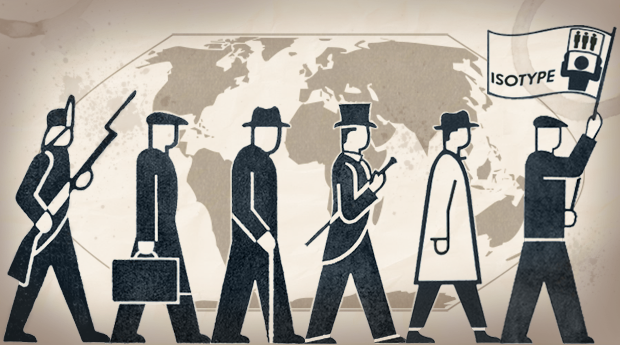Holy Brand Resurrection: Top Candies That Reappear on Halloween

Every Halloween, there is a celebration of all things that go “yum!” in the night, as we delight in our favorite candies. The average household spends $44 a year on candy for trick-or-treaters, with over 2 billion total spent on the holiday. There are a number of year round favorites that children (and many adults) look forward to indulging in, such as M&M’s, Kit Kats, Reese’s Cups and Hershey bars to name a few. But then, there are those candies that have been long forgotten that find new life come October 31.
Along with ghosts and mummies and vampires, a few candy brands are resurrected every year. Appearing suddenly from dusty convenience store shelves and drafty warehouses, these candies can be found in the bags, pillowcases and plastic pumpkins of school children. Whether trick or treat, here are a few of the brands that we notice always seem to appear out of nowhere every Halloween.
Why Marketing to Millennials Is Just Like Marketing to Everyone Else

"Don’t you want kids to be healthy so they can live a long and healthy life?” questioned 9-year-old Hanna Robison to McDonald’s CEO Don Thompson, making the head of one of the largest corporations in the world uneasy and struggle for an answer like a child caught with his hand in the cookie jar. Before, such questions could easily be bypassed with a patronizing response and a Happy Meal. Today, not so much.
Hannah is part of the Millennial audience, young upstarts who are more skeptical and informed than past generations due to a little thing called the Internet. Not only does she have the opportunity to ask such a question, but she also has the right to be taken seriously.
This is the problem that brands are facing in the Information Age as they are constantly caught off-guard by consumers who now have just as much power as a CMO. How can brands deal with Millennials? Well first, beyond technology and social media, we need to take a look at what they want from the brands they patronize.
A World Without Google

Today marks the 15th anniversary of Google, undoubtedly the most successful Internet concept ever. In just a short time, Google has become a seamless part of our lives, ranking somewhere between Jesus and bacon in importance. The brand has joined the ranks of Kleenex and Xerox (and if you’re in the South, Coke), with its name becoming synonymous with its product and somewhat generic as we “Google” this or that. Most of the world can’t use a smartphone without using a Google product. Some people can’t even travel across their own city without using Maps. It's hard to fathom a life without it. Google Reader users, however, got a small taste of life would be like without the Big G in our lives.
On July 1, 2013, Google Reader said its last goodbyes and walked off into the sunset. Though far from a popular product, it still had its fair share of fans and public outrage. A petition was created for it on Change.org, garnering over 150,000 signatures. Just one small, almost forgettable product in Google’s portfolio had such a fanatical cult following that people were willing to make a petition about it next to fighting for women’s rights and stopping Medicare cuts. And it was taken seriously.
It begs the question: what would happen if some of Google’s other products went quietly into the night? Though we imagine we’d get by somehow, I’m not so sure.
Otto Neurath and the Untold History of the Infographic

The common cliché is that a picture is worth a thousand words. However, the worth of an image is still grossly undervalued. A picture has the ability to break down barriers of misunderstanding across languages and cultures, while using universal truths and experiences to help people make connections.
Of course, it's easy to see how a picture could lose its perceived worth. Today we are so inundated with imagery that it seems very commonplace, from skulls to represent poison, to street signs that tell us when there are children at play, to directions on how to put on a floatation device should our plane lose altitude. And of course, there are those wonderful things called infographics, which help break down the loftiest, dustiest, most impenetrable statistics into easy to understand bite-sized chunks. You can’t visit a website, open a magazine or even go the bathroom these days without seeing one.
There are many people throughout history who helped push the use of infographics to be commonplace. Most notable among them is Edward Tufte, whose book, The Visual Display of Quantitative Information, is considered the Bible on the subject. However, Tufte is far from the first to use pretty pictures to make things simple and easy to understand. Way before Edward Tufte mortgaged his home to finance his book on infographics, a polymath by the name of Otto Neurath saw value in images being more than just a pretty picture. He had a vision of using images as a universal language, changing the way we look at statistics and, yes, the restroom… forever.
Making Your Corporate Character Count

We’ve all seen the cliché image of corporate giving. A huge corporation writes a check to the charity of the week in exchange for some good press and looking a little less evil in the eyes of consumers. Although we’d never admonish anyone for donating money or volunteering his or her time to a worthy cause, this model of corporate responsibility is perfunctory at best. It is the equivalent of getting a little league trophy. You’ve shown up, but you haven’t really earned anything. You’ve done nothing to show your dedication, endurance, skill or strength. You didn’t give your all.
You didn’t do anything to prove your character.